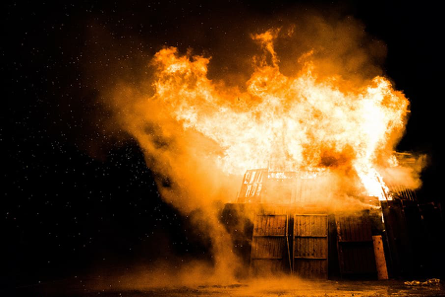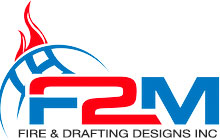The Science of Fire

The science related to fire is a very interesting subject. Fire can occur nearly anywhere and anytime under the presence of the right conditions. It will depend on the environmental variable to depict the kind of fire incidents that occur. Is there an abundance of fuel and other factors that give rise to fire? Fire causes the loss of human life, business resources, and structural integrity. Here in this article, we will talk about fire scientifically and discuss the need for fire sprinkler systems for commercial buildings, offices, and other business spaces.
What we call “fire” is a chemical reaction known as combustion. It is a common chemical reaction that takes place around us every day. It requires fuel and other factors, including oxygen in the air, material to burn, and heat to begin the reaction. Once the heat on a material goes up to a certain temperature, combustion takes place. Let’s dive deeper into the process of learning how a small chemical reaction can be detrimental to businesses and the lives of humans who fall victim to fire accidents.
Understanding the Science of Fire
When some form of fuel interacts with the oxygen in the air, the combustion reaction takes place. However, not all oils such as gasoline or wood catch fire when they come in contact with oxygen under any condition. For combustion to begin, the material has to be above a certain threshold of temperature. This will form the right conditions for ignition, and oxygen-aided fire will catch onto the material.
To understand better, here’s the fire triangle that experts and professionals explain:
- Oxygen – present in the air
- Fuel – any material that burns, such as wood, paper, law, etc.
- Heat – enough exhaustion and heat energy transfer to ignite the material
The trio of these elements forms the Fire Triangle that is necessary for teaching fire prevention and control. Why is that necessary? You should always remain prepared for unusual circumstances but more than that, learning what causes what will ensure that you know the right precautions. Removing any of the elements from the equation of the Fire Triangle, such as fuel, heat, or oxygen, will suppress the fire. For example, covering the fire with a blanket can remove the supply of air to it and thus put out the fire.
Learn the Chemical Reaction of Combustion
The most prominent causes of fires in buildings include paper burns, faulty wires, stove accidents, and more. This growing number of causes of fire accidents is demanding more and better forms of fire protection and safety systems. While fuel can be in any state (solid, liquid, or gas), once it reaches a high enough temperature to expel gases (if not gas already), combustion begins. The gas molecules break apart and join with oxygen to form water and carbon dioxide molecules.
Fire keeps erupting if the heat is consistent. Consequently, the heat relies on the burning fuel to maintain a consistent temperature. Altogether, with the presence of enough fuel and heat, the reaction will not come to an end quickly. Hence, the fire spreads once the gases from the reaction start to disperse.
Why Do Businesses Require Fire Sprinkler and Protection Systems?
Reports from National Fire Protection Association show how fires cause so much damage. According to a report of 2017, the property damage from fire accidents totaled $10.7 billion. Be it residential, commercial, or industrial fire, a place with fire hazards is prone to fire accidents. That’s why there are strict codes and standards that fire-hazardous places have to follow.

(Source)
There are many different forms of damages that structures and buildings have to endure due to fire incidents. Fire is a naturally destructive element when viewed on a grand scale. Since minute fires are easily controllable, there are no major causes of concern. Here are the forms of damages that can take place and affect commercial buildings, offices, and other spaces.
- Aesthetics damage
- Smokes pollution
- Soot buildup and smells
- Structural damage
- Fire protection equipment and system losses
- Business resource losses
- Health injuries
- Loss of human lives
- Loss of assets and expensive business resources
The Science of Fire: Conclusion
Do you think that you require a better fire protection system? Do you think your current fire sprinkler or other fire-safety system is capable of keeping our and your environment safe? If the answer is not a “yes,” you should consider reaching out to F2M Fire & Drafting Designs Inc. for help.
We offer the best resources at our disposal, including efficient fire sprinkler designers, using our experience of over 20 years in keeping buildings safe from fire damage. You can rely on us when it comes to keeping your space fire-safe. Call us at to schedule a meeting with an expert today.
F2M Fire & Drafting Designs Inc.
1231 Lafayette Ave, Fl 2
Bronx, New York, 10474
Learn more at our official website.
Reference Links:
https://www2.illinois.gov/dnr/education/Documents/ScienceFire.pdf
https://www.techniquest.org/blog/the-science-of-fire/
https://www.sciencelearn.org.nz/resources/747-what-is-fire
https://hallmark-mc.com/blog/effects-of-fire-damage-to-businesses/
